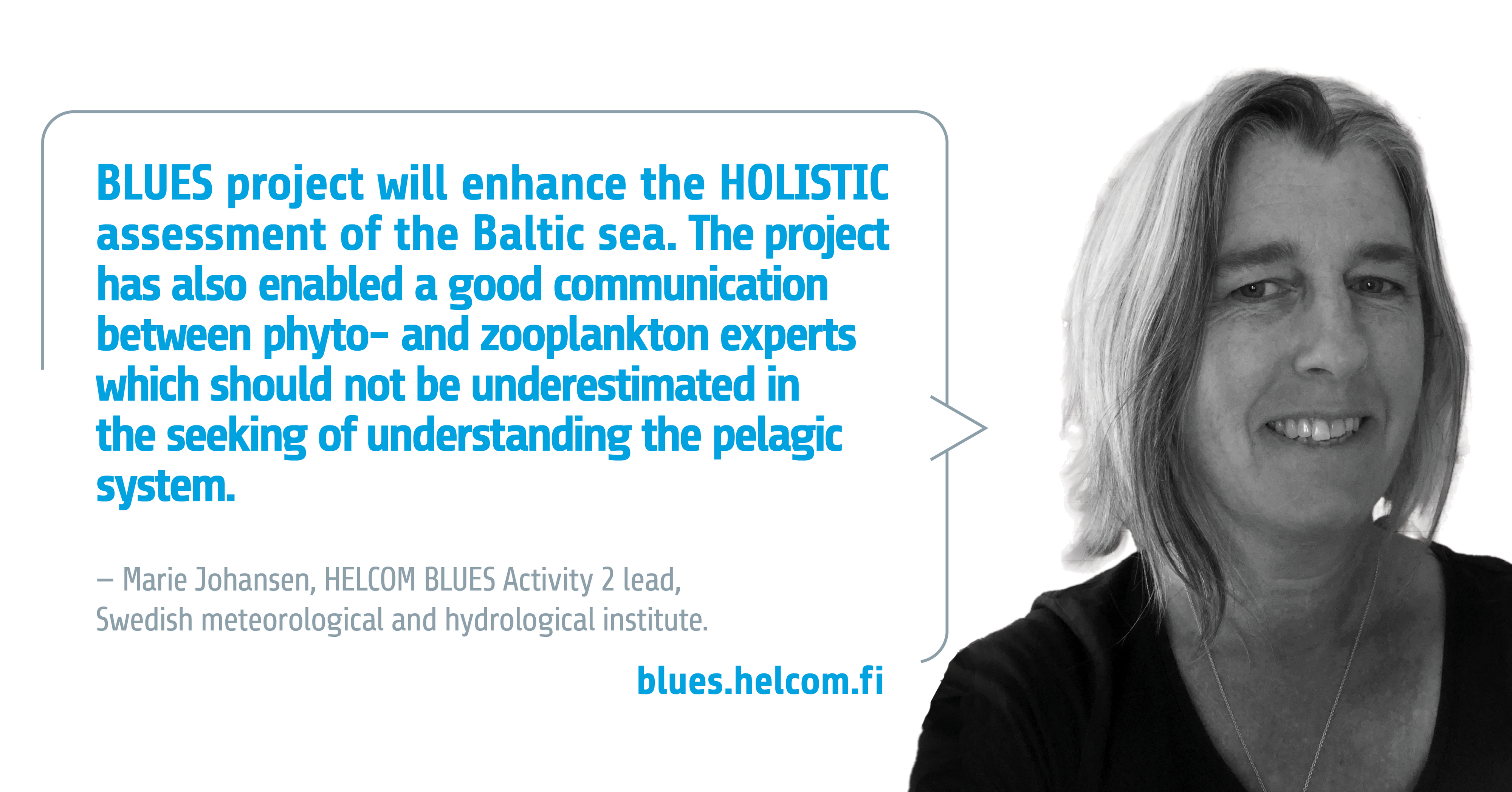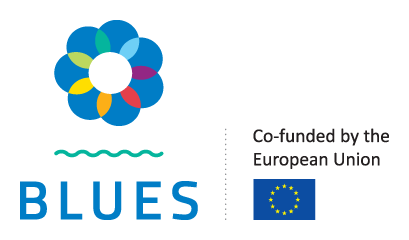
Marie Johansen is lead for activity 2, pelagic habitat which includes both phyto- and zooplankton indicators the goal with the activity is to complete the operationalisation of the two indicators but also to comine them into an overall assessment of the pelagic habitat. She is a planktonexpert at the Swedish meteorological and hydrological institute in Sweden where she is also responsible for Swedish national monitoring of phytoplankton on the swedish west coast. She is also an active member of HELCOM phytoplankton expert group.
What is your Activity/Task in HELCOM BLUES all about? What main challenges and/or pressures on the Baltic Sea does it try to solve?
My work in Activity 2, is to lead the work of four tasks, tasks 2.3.1 to 2.3.4. The first two tasks are to further advance the specific HELCOM indicators on phyto- and zooplankton to cover more areas in the Baltic Sea. These two separate indicators will also be assessed together to assessment of the pelagic habitat as a whole. The fourth task is to test the indicator, Life form pairs, developed by the OPSAR- COBAM pelagic habitat group that considers changes in ecological traits of the plankton community. The pelagic habitat is complex and dynamic and the role of each planktonic species is sometimes conceptual difficult to understand. The primary producers, such as phytoplankton, are directly affected by eutrophication as they, just like plants on land, utilize dissolved nutrients. The zooplankton are efficient consumers of phytoplankton and can, at optimal circumstances, have a great impact on the phytoplankton stock. Zooplankton provides at the same time feeding habitat for larger organisms, such as fish. On top of the direct effect we have the climate factors, saltwater inflows from the North Atlantic, and fishery that also act on the pelagic habitat. The use of specific indicator species in the system is haltered by the difference in the community due to the salinity gradient found which structures the community differently, that rules out the use of common species to assess. Dealing with the specific plankton indicators and how to extract plankton community properties that can be used to understand the quality of pelagic habitat.
What are the planned outcomes of your specific BLUES Activity/Task?
We will have much better coverage of the two HELCOM indicator that we have right now for the zooplankton indicator, Zooplankton Mean Size and Total Stock, a core indicator and for phytoplankton, Seasonal succession of dominating phytoplankton groups (a candidate indicator). These two indicators will also be assessed together using the HELCOM BEAT tool to make an overall pelagic habitat assessment. As a bonus the OSPAR indicator, Life form pairs, will be tested in a pilot study for eventual use in the third HOLISTIC assessment (HOLAS 3). Moreover, we will produce and make freely available tools for the indicator calculations that could be used by national laboratories, managers, and researchers around the Baltic Sea.
How will your BLUES Activity/Task benefit your organization in particular and the Baltic Sea in general?
The Swedish meteorological and hydrological institute has been responsible for the Swedish pelagic monitoring program along the Swedish west coast for several decades. The outcomes of the BLUES project will enhance the HOLISTIC assessment of the Baltic sea. It will also be a significant resource for the national assessment as well as the national assessment to further meet the requirements from EU. The freely available scripts developed during the project can also be used to further understand the complex nature of the pelagic habitat. The project has also enabled a good communication between phyto- and zooplankton experts which should not be underestimated in the seeking of understanding the pelagic system.
